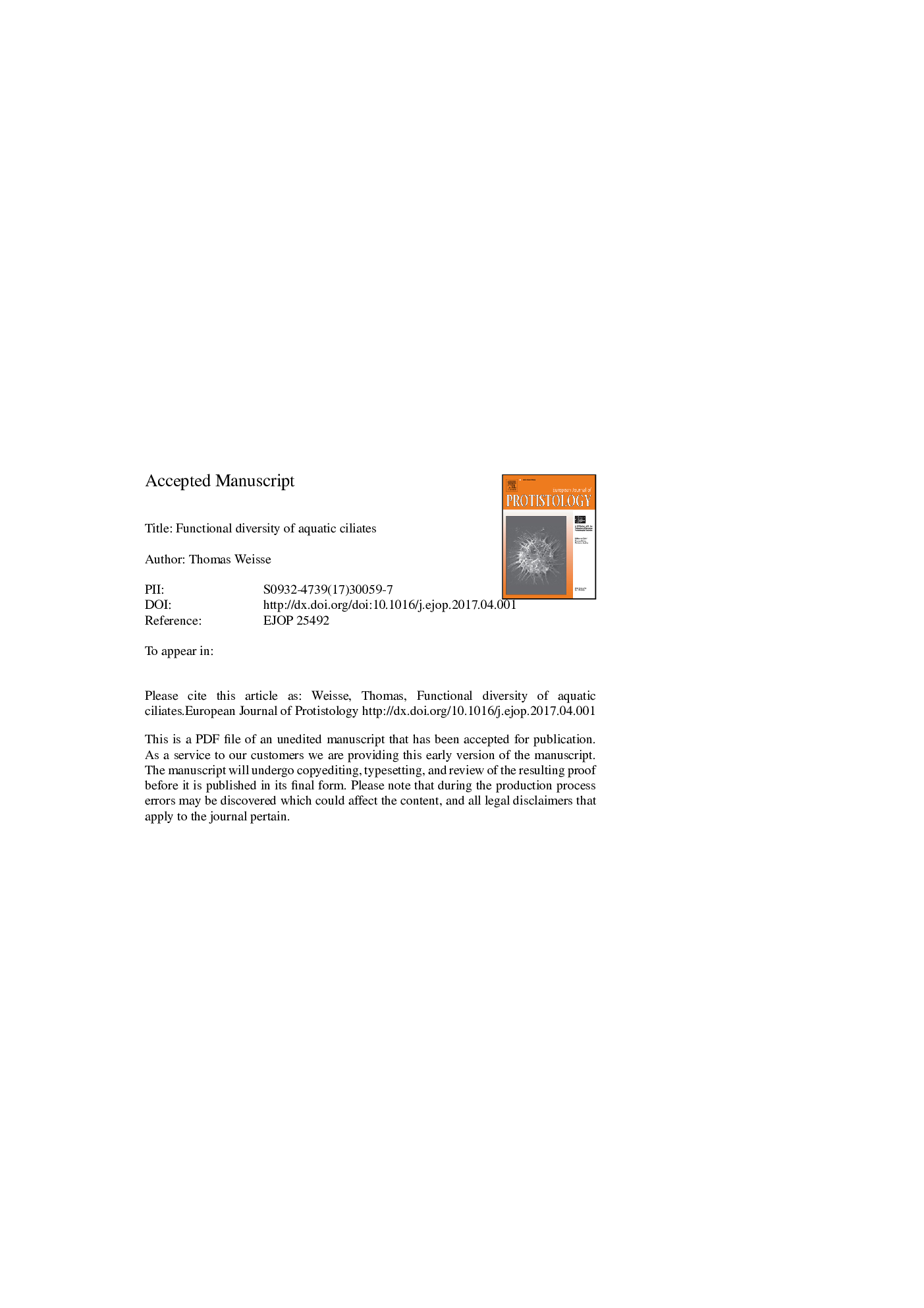| Article ID | Journal | Published Year | Pages | File Type |
|---|---|---|---|---|
| 8382682 | European Journal of Protistology | 2017 | 69 Pages |
Abstract
This paper first reviews the concept of functional diversity in general terms and then applies it to free-living aquatic ciliates. Ciliates are extremely versatile organisms and display an enormous functional diversity as key elements of pelagic food webs, acting as predators of bacteria, algae, other protists and even some metazoans. Planktonic ciliates are important food for zooplankton, and mixotrophic and functionally autotrophic species may significantly contribute to primary production in the ocean and in lakes. The co-occurrence of many ciliate species in seemingly homogenous environments indicates a wide range of their ecological niches. Variation in space and time may foster co-occurrence and prevent violating the competitive exclusion principle among ciliates using the same resources. Considering that many ciliates may be dormant and/or rare in many habitats, ciliate species diversity must be higher than can be deduced from simple sampling techniques; molecular methods of identification clearly point to this hidden diversity. From a functional point of view, the question is how much of this diversity represents redundancy. A key challenge for future research is to link the ecophysiological performance of naturally co-occurring ciliates to their functional genes. To this end, more experimental research is needed with with functionally different species.
Keywords
RmaxNiche spaceHalf saturation constantImaxPCoAFTDRDACWMOTUPCAstandard deviationConversion efficiencyredundancy analysisPrincipal Coordinates AnalysisPrincipal component analysisFunctional diversityCommunity weighted meanLOD یا Limit of detectionMaximum specific growth rateFunctional evennessMetabolic rateEcological networksFunctional traitFunctional richnessMetagenomicsevolutionary ecologyFunctional ecologyMortality rateoperational taxonomic unitFunctional divergenceNumerical responseFunctional responseFunctional redundancyCaP
Related Topics
Life Sciences
Agricultural and Biological Sciences
Agricultural and Biological Sciences (General)
Authors
Thomas Weisse,
